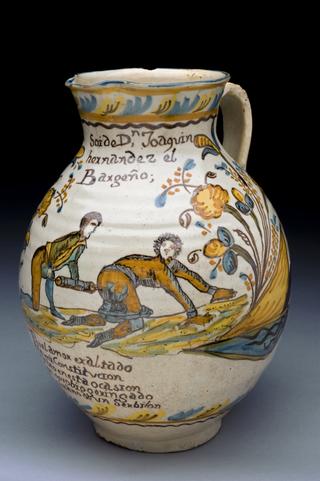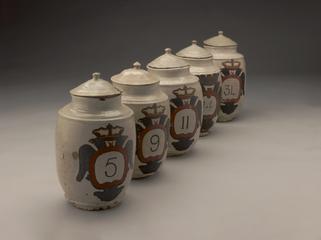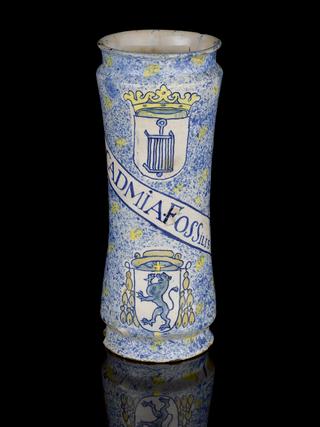




Ornate tin glazed earthenware albarello, used for theriaca, Italian, 1701-1770
This is a drug called theriac, a thick sticky liquid medicine (called an electuary) made from up to 64 often strange and exotic ingredients – the flesh of snakes was considered one of the more vital. Originally it was used to treat poisoning and animal bites. The name ‘theriac’ is from the Greek therion, a “wild or venomous animal”. Galen recommended the treatment for snake bites. It later became a universal cure for a range of illnesses and diseases and was still in use up until the 1770s.
Details
- Category:
- Medical Ceramic-ware
- Collection:
- Sir Henry Wellcome's Museum Collection
- Object Number:
- A43083
- Materials:
- earthenware (tin glazed)
- Measurements:
-
overall: 470 mm 245 mm, 4.98 kg
- type:
- drug jar


